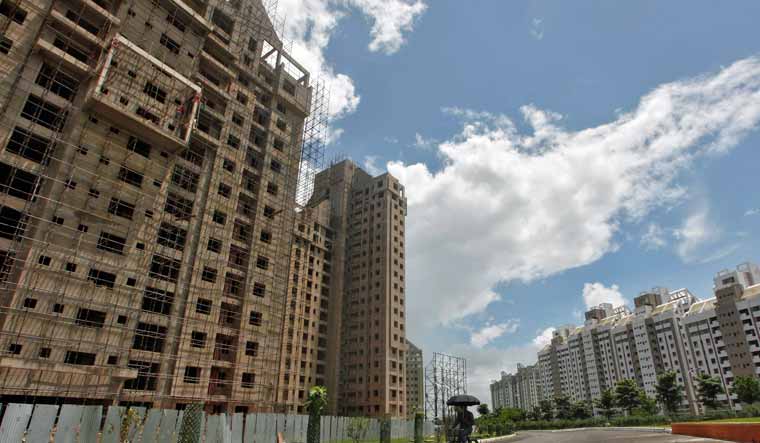Annu Tandon and Apjit Kaur Chhabra are educated, well-to-do women. One is a social worker and politician, and the other a doctor. Nonetheless, their status and social standing gave them no cushion against the machinations of a businessman who is encroaching the common areas in their neighborhood.
“His encroachments have made it difficult for me to even get my car out of the gate”, says Chhabra.
Tandon says, “He has built the structure illegally, and the surveillance camera mounted on it give a clear view of the insides of my house”.
The said illegal structure has taken away a portion of the approach road to their homes and also enclosed within itself the streetlight.
Such challenges to women homeowners are not unheard of.
Across rural and urban India, home ownership by females is negligible due to societal and cultural reasons. An intolerant patriarchal system chooses to vest ownership of land in men and societal norms give it a nod. Land and houses built on it are symbols of prestige—but such prestige is mostly reserved for men. And whenever women assert their rights to ownership, like Tandon and Chhabra, they find themselves up against a man who believes it is his right to either divest them of that ownership altogether or create tough situations for them.
Both Tandon and Chhabra lost their husbands some time ago. Both have grown up children who live elsewhere. Their travails for their homes go back to 2011 when the High Court directed the Lucknow Development Authority (LDA) to take appropriate steps to ensure that the construction was not in violation of an expired map which had been illegally re-validated.
But Tandon and Chhabra allege that construction kept growing, and despite appeals to the LDA and subsequent visits by its teams, the illegal structure was never demolished.
Land and homes are not typically viewed as possessions women must have. Among married women, only a few are joint owners of the houses they live in on paper. Among unmarried women, even houses they buy and pay for may have a male family member as joint owner.
The India Human Development Survey Wave -II (2011-12) calculated the numbers of women who found their names on homeownership papers. Only 15 per cent of married women had this right, while for widowed women this went up to 41 per cent. Married women whose spouses were absent had the lowest homeownership rates while in households which had only women and children, slightly more than one-fourth women had legal ownership of the household.
Mithlesh Khare, a retired government employee, said when she saved enough money to buy a flat in her name, her two brothers were aghast. “They insisted that since I was not married and had no children, the flat must be in joint ownership”. When Khare refused, relations with the brothers she had brought up after the early death of their father, soured.
On an appeal filed by Tandon, the Lucknow bench of the High Court, on September 18, passed an order mandating that "no further activities relating to the construction and completion of building shall be carried out,” till the matter is next heard.
Tandon said the day previous to the order there was furious construction activity till late in the night. “The physical and emotional distress is unimaginable,” she said.
Chhabra said she preferred not to confront their tormentor, a man with a cable business and with some political clout. “The thought of leaving my home has not occurred to me just yet, but who knows,” she said.
Secure property and home ownership is a source of self-empowerment for women. It enables them to challenge the state, landlords, husbands and parents. It entitles them to greater decision making power and reduced levels of anxiety about physical security.
Yet, as Chhabra and Tandon’s case illustrates, such control is often abhorrent to even such men who have no direct stake in their lives.
The fight for secure home ownership is a long one.






